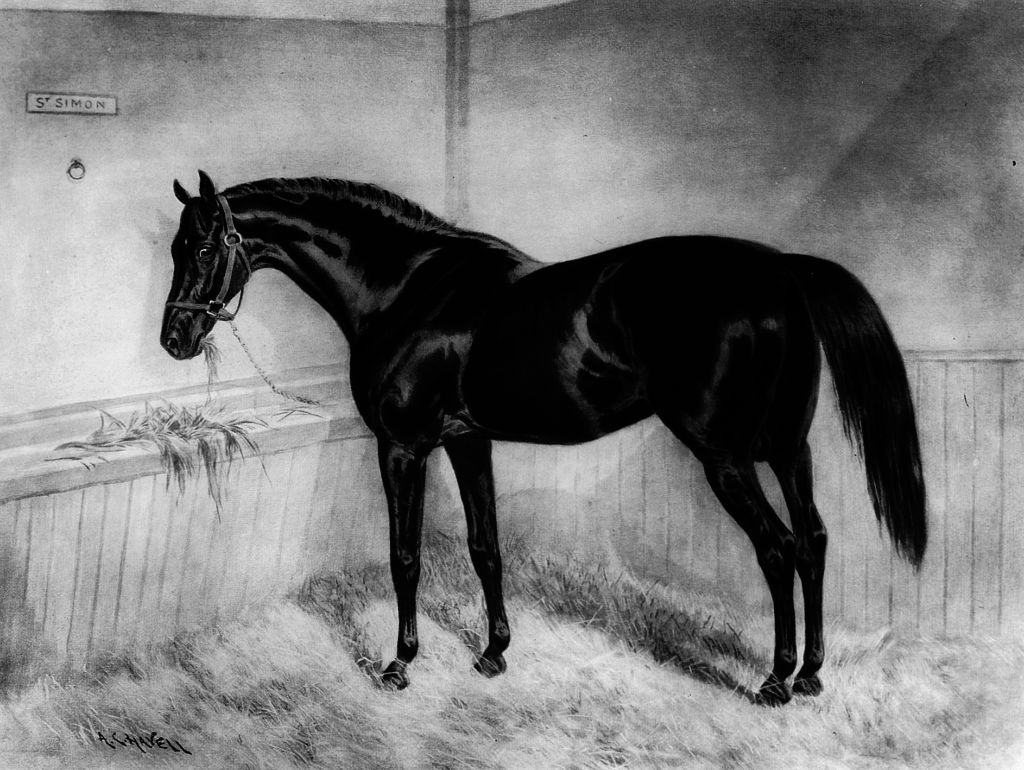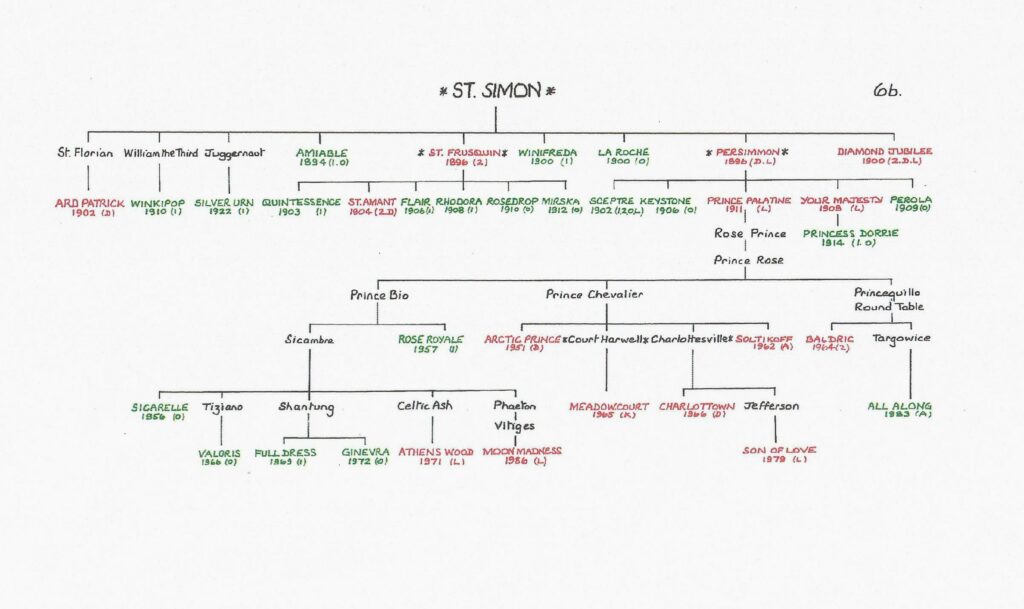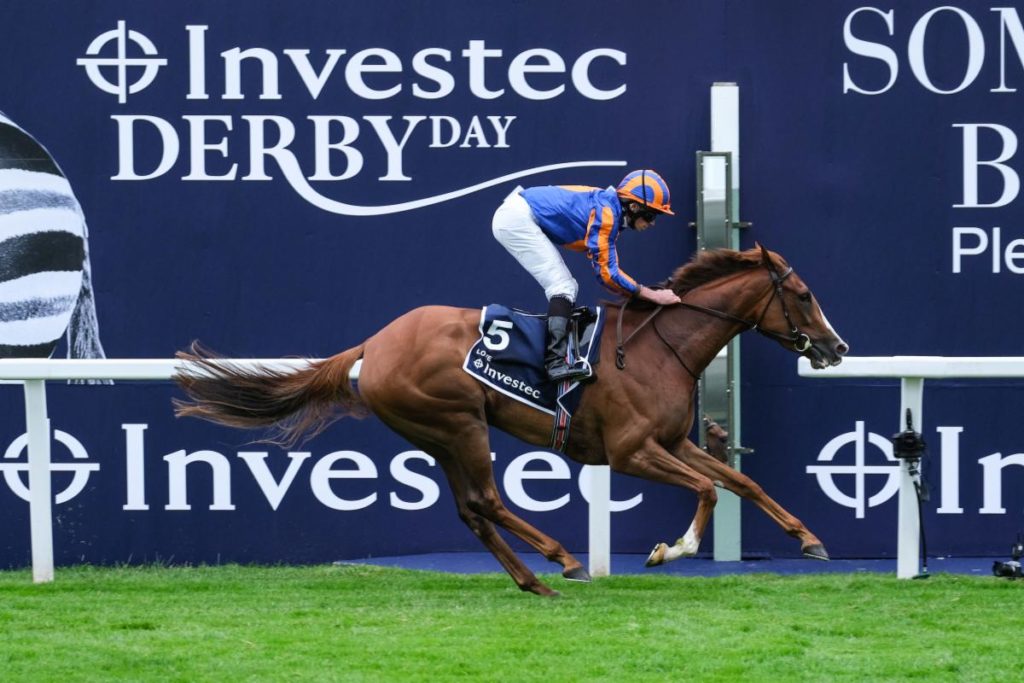ADAYAR
(b.c. 2018)
Winner of the 2021 Cazoo Derby Stakes
For easier reading Mobiles view landscape
Run on Saturday, 5 June, 2021 as the Cazoo Derby Stakes over the Derby Course of one mile and a half and 6 yards, Epsom Downs. For three-year-olds; entire colts 9st 0lb, fillies 8st 11lb. 387 entries. Value to winner £637,987.50
1st ADAYAR Adam Kirby 16-1
2nd MOJO STAR David Egan 50-1 4½ lengths
3rd HURRICANE LANE William Buick 6-1 3¼ lengths
Also ran: 4th Mac Swiney (Kevin Manning) 8-1; Third Realm (Andrea Atzeni) 14-1; One Ruler (James Doyle) 17-1; Bolshoi Ballet (Ryan Moore) 11-8 Fav: Youth Spirit (Tom Marquand) 25-1; John Leeper (Frankie Dettori) 8-1; Gear Up (Ben Curtis) 50-1; Southern Lights (Declan McDonogh) 33-1 (tailed off 42 lengths behind the winner.

Commentary: Minutes after the winner crossed the line all the talk was of the jockey, not the horse; Adam Kirby, having been offered the ride on the much fancied John Leeper, apologetically, turned down the ride on the Godolphin long shot Adayar. However, when Aidan O’Brien released Frankie Dettori, he took over the ride on John Leeper, returning Kirby to Adayar. Fate, however, later sought fit to reverse Kirby’s misfortune.
The betting centred on Bolshoi Ballet, Aiden O’Brien’s sole representative, a Galileo colt having won the Ballysax Stakes and the Derrinstown Derby Trial, to send him off the 11-8 favourite. Other fancies were Godolphin’s, Hurricane Lane, winner of the Dante Stakes, now at 6-1, while John Leeper, winner of Newmarket’s Fairway Stakes, and Jim Bolger’s homebred Mac Swiney, winner of the Irish 2,000 Guineas, were both on offer at 8-1. The mystery of the betting was Adayar –almost exclusively backed on the exchanges from 40-1 down to 16-1.
On a glorious sunny day the 11 runners left the stalls on good to soft ground. After a furlong, Gear Up led from Youth Spirit with Bolshoi Ballet close up. Soon after, Adayar, drawn 1, dubbed by experts as “the coffin box”, was driven up to lay handy alongside his stable companion, Hurricane Lane. From the mile post to the top of the hill, the order was unchanged, but rounding Tattenham Corner, Bolshoi Ballet ominously closed on the front two, while Adam Kirby on Adayar saw to track Gear Up at the rail. When half a gap appeared Adayar courageously went through and with authority went on to win by 4½ lengths. Mojo Star and Hurricane Lane came out of the pack to fill the places, but by now the bird had flown.
11 ran. Time 2 min 36.85 sec.

The winner was OWNED and BRED by Godolphin and TRAINED by Charlie Appleby at Newmarket, Suffolk.
Finally, two quotes that will live long in the memory:
Adam Kirby revealed, “I always said I’d rather win the Derby than be Champion Jockey”. And when Charlie Appleby suggested to Sheikh Mohammed that Adayar was more of a St Leger horse, the Sheikh replied, “No Charlie, there’s only one Derby – you need to keep him in the Derby.”
Footnote: Due to the Government’s revision of the Coronavirus situation, the 2-day Cazoo Derby Festival was run before a limited crowd of 4,000, with no access to The Hill.

The winner, ADAYAR, has won 2 races from 5 starts: EBF Stallions Golden Horn Maiden Stakes, 1m 75y, Nottingham, Cazoo Derby Stakes, Epsom.
The sire, FRANKEL b.c. 2008 ex KIND by DANEHILL, (unbeaten), won 14 races incl. Two Thousand Guineas Stakes, St James’s Palace Stakes, Sussex Stakes, (twice), Queen Anne Stakes, International Stakes, Champion Stakes. Sire of 3 Classic winners since retiring to Judmonte’s Banstead Manor Stud in 2013, incl. ANAPURNA , 2019 Investec Oaks; LOGICIAN, 2019, William Hill St Leger Stakes .
The dam, ANNA SALAI b.f. 2007 by Dubawi. Won 1 race from 8 starts : Prix de l’Grotte, Longchamp. She has bred 1 winner from 3 runners.
____________________________________________________________________________________________________________
Michael has recently published The Classics Chart 1776-2020 showing the male lineage of every Classic winner – see Michael’s BOOKS FOR SALE for more details.









 The next day, against similar opposition, Escape, carried 8 st 13 lb, over an extended 4 miles (Beacon Course), and completely reversed the form to win at odds of 5-1. There followed, accusations that Chifney had pulled Escape the first time to get better odds the next day. Some, even suggesting that the Prince was in on the plan. One rumour that flourished, however, was, that two rouges of the ring, fearing the follow up money for Escape, had seen to it that he was over fed on the morning of the race.
The next day, against similar opposition, Escape, carried 8 st 13 lb, over an extended 4 miles (Beacon Course), and completely reversed the form to win at odds of 5-1. There followed, accusations that Chifney had pulled Escape the first time to get better odds the next day. Some, even suggesting that the Prince was in on the plan. One rumour that flourished, however, was, that two rouges of the ring, fearing the follow up money for Escape, had seen to it that he was over fed on the morning of the race.

 Edward Smith-Stanley, 12th Earl of Derby (1752-1834), on becoming of age, bought a country house, at Woodmansterne, near Epsom, called ‘The Oaks’, from his uncle by marriage, General John Burgoyne. For the Epsom May Meeting in 1778, Lord Derby, a steward, invited a party of friends to his house, where it was proposed that the following year, a single race over one and a half miles for three-year-old fillies would add some spice to the meeting. The race was named after Lord Derby’s house and appropriately, won by his filly, Bridget. The event was considered a great success and as a result, another new race was proposed, this for both colts and fillies, to be run over a mile the following year – but what to call it – “The Bunbury” or “The Derby” – they tossed a coin and, “Heads it is, so it’s The Derby – The Derby Stakes.”
Edward Smith-Stanley, 12th Earl of Derby (1752-1834), on becoming of age, bought a country house, at Woodmansterne, near Epsom, called ‘The Oaks’, from his uncle by marriage, General John Burgoyne. For the Epsom May Meeting in 1778, Lord Derby, a steward, invited a party of friends to his house, where it was proposed that the following year, a single race over one and a half miles for three-year-old fillies would add some spice to the meeting. The race was named after Lord Derby’s house and appropriately, won by his filly, Bridget. The event was considered a great success and as a result, another new race was proposed, this for both colts and fillies, to be run over a mile the following year – but what to call it – “The Bunbury” or “The Derby” – they tossed a coin and, “Heads it is, so it’s The Derby – The Derby Stakes.” Sir Thomas Charles Bunbury (1740-1821), was the son of a vicar at Great Barton, near Newmarket. He was elected a Whig MP for Mildenhall, Suffolk, at the age of 21 and became a strong opponent of the slave trade. He was the first outstanding member of the Jockey Club and became a senior Steward at the age of 28, thereafter taking the role of ‘perpetual president’. However, like the Earl of Derby, he too was subject to a scandal. After his marriage to the notorious Lady Sarah Lennox in 1762, she had an affair with Lord William Gordon, giving birth to his daughter. The couple eloped taking the child with them, but when Lord William abandoned her, Sir Charles refused to take her back.
Sir Thomas Charles Bunbury (1740-1821), was the son of a vicar at Great Barton, near Newmarket. He was elected a Whig MP for Mildenhall, Suffolk, at the age of 21 and became a strong opponent of the slave trade. He was the first outstanding member of the Jockey Club and became a senior Steward at the age of 28, thereafter taking the role of ‘perpetual president’. However, like the Earl of Derby, he too was subject to a scandal. After his marriage to the notorious Lady Sarah Lennox in 1762, she had an affair with Lord William Gordon, giving birth to his daughter. The couple eloped taking the child with them, but when Lord William abandoned her, Sir Charles refused to take her back.






 Love storms home setting a new record
Love storms home setting a new record